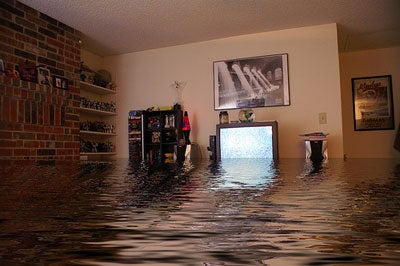A few months ago I logged into my online utility account and noticed it was more than twice the amount I usually pay, all of the excess going to water. Given the kind of work I do, I scour my bill every month, comparing electric and water usage month-to-month and over the course of the year. We are water and electricity savers in our household, so what on earth could this spike be?
I immediately called the City of Austin, and they sent someone out to check the meter. Nope, nothing on that end. Then we brought in a plumber, who spent many hours and many of our dollars searching and found a leak in the toilet. By the time we went through all of that and got the toilet fixed, we had to pay our enormous bill plus the plumber’s bill. Why should I have to go through that rigmarole just to find a leak?
Wouldn’t it be easier if a smart water meter could send my utility and me a message the moment the toilet starts leaking?
Unfortunately, water infrastructure in this country is sorely in need of a reboot. The American Society for Civil Engineers gave the U.S. drinking water infrastructure a grade of a “D” in its 2013 Report Card for America’s Infrastructure, stating there are 240,000 water main breaks per year. And we’re still using antiquated “technology” in much of the sector.
Traditional water meters are not only less accurate than smart meters, but they tend to lose accuracy as they age. The equipment must be replaced every 15-20 years on average, and many water utilities are now facing a natural replacement of their equipment. With this opportunity, they should prioritize equipment that’s more accurate and allows customers to be better informed about and respond accordingly to their usage.
Take a page from the electricity sector
The electricity sector has zoomed ahead on smart meters and installing smart grid technology across the country, whereas the water sector has been slower on the uptake. This is partially due to the fact that electricity (which travels through wires) is inherently easier to monitor through smart technology. However, there are other, more nuanced reasons too, such as the artificially low price of water and insufficient business case to invest in a modern water system.
Advanced Metering Infrastructure (AMI) for water, just as with electric meters, is a sophisticated two-way communication system that enables the utility and the customer to receive and react to real-time information, such as price signals and usage. But it goes beyond that.
They can also help prevent further deterioration. For example, a smart meter is more sensitive to low water flows, making it more accurate and comprehensive. In contrast, a traditional water meter measures total consumption of a building or home, meaning leaks are difficult to detect and customers can’t pinpoint inefficiencies.
By installing smart meters and sensors, both the utility and the customer are empowered with the information they need to improve efficiency and repair leaks earlier.
Information leads to better planning
In water-stressed areas, the primary strategy has been to impose watering restrictions and conservation measures. These are necessary but they’re not enough, especially because we’re facing drier conditions and hotter temperatures as climate change advances.
If water stress and drought are the new normal, the regulators need advanced water planning, not drought contingency planning. The utility could use data from smart meters to institute drought pricing and people can adjust their water use according to price signals through their meter. If there are periods of drought relief, water could be reserved through water storage projects.
Smart meters can also help by giving more flexibility to homeowners and businesses. If people are able to monitor their usage on a real-time basis, they can decide how to save water during a drought based on individual situations.
An ounce of prevention, a pound of cure
One major obstacle to installing smart water meters and other smart water technologies is cost. This is due to many factors, mostly that water is not priced according to its true value and implementing new infrastructure and technologies is always an expensive undertaking. If water were priced accordingly, there would be more of an incentive to invest in water-saving infrastructure.
One of the main effects of old water infrastructure is leakage, but the exact amount of water escaping through pipes is unknown because of the lack of data. In Texas alone, billions of gallons of water are lost each year—and that’s in a state with a growing population and a growing water supply problem.
The old saying, “an ounce of prevention is worth a pound of cure” is wholly applicable here. If we continue to do business as usual and replace aging infrastructure with the same old thing, we’re just putting Band-Aids on a gunshot wound.
There are many intricate details to the water infrastructure system, but a good first step at this critical time is deploying the smartest available technologies to enable both providers and users to better manage this precious resource. If water stress is the new normal, regulators should take steps now to ensure that we preserve what water we have left and safeguard supplies for the next generation. If nothing else, your wallet (and toilet) will thank you for it.










